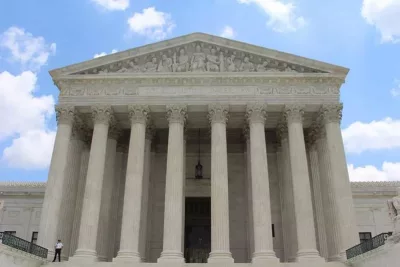
Defamation of a Public Figure vs. Private Figure Explained
This page has been peer-reviewed, fact-checked, and edited by qualified attorneys to ensure substantive accuracy and coverage.
The difficulty of proving your defamation case, and if you even have a valid claim at all, may depend on if the court considers you a public figure or a private figure.
In the context of defamation, a public figure is generally defined as an individual who has assumed a role of prominence in society or voluntarily or involuntarily thrust themselves into the public spotlight, like a government official, a celebrity, or even a person at the heart of a controversy. Public figures have a higher burden of proof when bringing a defamation claim; they must show that the defendant acted with actual malice or reckless disregard for the truth when publishing a false statement.
A private figure, on the other hand, is generally defined as anyone who does not qualify as a public figure and is not in the public spotlight. Private figures must only prove that the defendant acted with ordinary negligence when publishing a false statement.
At Minc Law, we have extensive experience representing politicians, celebrities, influencers, and other public figures in high-stakes litigations against media outlets and individuals. As a result, we know how to effectively analyze potential claims for defamation, navigate the ins and outs of filing suit, and explore litigation alternatives. We have also authored more than 22 defamation state guides to help our clients and prospective clients across the U.S. understand their legal options.
In this article, we provide an in-depth look at private and public figures in the context of defamation law. We also discuss examples of common public and private figures, as well as the burdens of proof each type of plaintiff must meet when bringing a defamation case.
Don't let defamation control your image.
Contact us for personalized, effective representation. Let us help you protect your image and preserve your good name.
Contact Minc LawWho Are Public Figures in the Defamation Arena?
The distinction between public figures and private individuals matters in defamation law because it changes the burden of proof in bringing a lawsuit.
To succeed in a defamation lawsuit, the plaintiff must show that the statement was untrue and harmful to their reputation. On top of these factors, a public figure must also demonstrate that the defamer made the statement with malice (or malicious intent to harm them).
Definition of Public Figures in Defamation Law
In legal terms, a public figure is an individual who is at the forefront of public issues or performs a prominent role in society. Those with a certain amount of fame or renown can also be considered public figures. For example, the following people would be considered public figures in a defamation law case:
- Government officials and politicians,
- Prominent business leaders,
- Celebrities, and
- Famous sports figures and athletes.
Most U.S. states take the idea of public figures one step further by expanding the public figure classifications into three types: public officials, all-purpose public figures, and limited-purpose public figures.
Public Officials
Public officials are not just elected officials or politicians. They include any individual whose role has a major influence over government and societal events, as well as those who work for elected representatives.
However, not every government official would be considered a public figure in a defamation case. The difference is generally in how prominent and influential the individual is in their role. For example, while an elected prosecutor may be considered a public official, an administrative assistant in the prosecutor’s office may not be.
What is the Difference Between All-Purpose Public Figures & Limited-Purpose Public Figures?
Aside from public officials, other public figures are split into two categories: all-purpose and limited-purpose. An all-purpose public figure has achieved “pervasive fame or notoriety,” like a traditional celebrity.
On the other hand, a person becomes a limited-purpose public figure by engaging or attempting to engage in influencing the outcome of a public controversy or topic, to the extent that their involvement places them within the public eye.
Examples of voluntary limited-purpose public figures include minor athletes or actors, social activists, or those who enter into the public debate about a controversial topic. An involuntary limited-purpose public figure did not choose to become involved in a controversy or important event.
In the significant court case of Dameron vs. Washington Magazine, the plaintiff Merle Dameron was the sole air traffic controller on duty the day of a plane crash near Dulles airport in 1974. While he was never found at fault for the crash, local magazine The Washingtonian issued claims that he was partly to blame for the passengers’ deaths.
The court found that while Dameron did not “inject” himself into the public debate, he did become involved in this public affair without his consent. He was, therefore, considered a limited-purpose public figure.
This case established a three-part framework for determining whether an individual is a limited-purpose public figure:
- There is a public controversy,
- The plaintiff played a central role in the controversy, and
- The defamation was pertinent to the plaintiff’s involvement in the controversy.
What Are Some Examples of Public Figures?
The following list gives real-world examples of public officials, all-purpose public figures, and limited-purpose public figures:
- President Joe Biden (public official);
- First Lady Dr. Jill Biden (all-purpose public figure);
- Chris Evans, a well-known actor (all-purpose public figure);
- Jeff Bezos, billionaire and CEO of Amazon (all-purpose public figure);
- LeBron James, NBA all-star (all-purpose public figure);
- Minor-league baseball player with limited name recognition (limited-purpose public figure);
- A previously unknown activist who generates news at a Black Lives Matter protest (limited-purpose public figure).
Why Are Public Figures Considered to Have Significant Ability to Counteract Defamation?
It is not necessarily true that public figures are considered to have a significant ability to counteract defamation—at least in the legal sense. The legal standard is tougher for public figures to counteract defamation because our society values free speech, uninhibited debate, and public information about those of pervasive influence.
For example, if John Smith publishes a blog post falsely claiming his neighbor was convicted of armed robbery 10 years ago, the neighbor will likely win a defamation case against him. But if John makes the same claims about his senator, it would be much more difficult for the senator to win a case. John simply needs to show that he had a “good faith belief” in the negative claim (meaning he acted with negligence, not actual malice).
Courts usually hold that public figures do not need as much reputational protection because they have placed themselves in the spotlight and must expect some level of negative attention. Public figures tend to have a greater ability to use the media or an online platform to counteract a narrative about them.
Because public figures usually have a larger social media following and better access to the media than private citizens, they have other means of making the truth known without involving the courts. For example, a celebrity who is the subject of false rumors can give an interview with a magazine, discuss the truth on a talk show or podcast, or post their side of the story on social media.
What Are the Requirements For Proving Defamation of a Public Figure?
In all defamation cases for both public and private persons, the plaintiff must prove that a statement was:
- A false statement of fact (i.e., not an opinion) about the plaintiff,
- Communicated to a third party,
- Made with at least a negligent level of intent, and
- Harmful to the plaintiff’s reputation.
For public figures, there is an additional requirement to bring a defamation claim. They must prove that the defamer acted with actual malice. In other words, the defamer knew that the statement was false—or they acted with reckless disregard for whether the statement was true or false.
This requirement can be broken down even further for public officials, all-purpose public figures, and limited-purpose public figures.
Public Officials’ Burden of Proof
Public officials must demonstrate that the defamer acted with actual malice for both public and private matters. Regardless of if the defamatory statement referred to the official’s private life or public record, they must have acted with actual malice or reckless disregard.
All-Purpose Public Figures’ Burden of Proof
Similarly, the actual malice standard for all-purpose public figures applies to nearly all facets of their lives.
Limited-Purpose Public Figures’ Burden of Proof
For limited-purpose public figures, however, the standard of actual malice only applies to the area(s) that make the individual a public figure.
For example, a minor-league athlete falsely accused of doping would need to prove actual malice—but not if the defamatory statement pertains to his private life instead.
What is a Private Figure in the Context of Defamation?
Public figures are those in the public spotlight, whether due to their occupation, celebrity, or participation in a controversy or public conversation. But the existence of public figures necessitates private figures. In this section, we define a private figure and how they should prove their case in a defamation lawsuit.
Definition of a Private Figure in Terms of Defamation Law
A private figure is not in the public eye. Unlike public figures, they have not been drawn into a public controversy—whether voluntarily or involuntarily—and they are not a public official or a celebrity.
What Are Some Examples Of Private Figures?
Listed below are a few general examples of individuals that would be considered private figures in a defamation case:
- A high school principal.
- A private guardian accused of sleeping with a client’s father.
- A local news reporter who left their job at a local television station.
- A company that does not advertise extensively.
How Must Private Individuals Prove Defamation?
Since private figures have not entered the public spotlight through their career or role in a public controversy, the law aims to protect their privacy. Private individuals, therefore, have a less strict burden of proof in a defamation matter.
A private figure plaintiff must only prove that the defendant acted with ordinary negligence—not actual malice or reckless disregard. “Ordinary negligence” means the defendant did not act with the caution an ordinary person would take in a similar situation.
However, some states still require private figures to show actual malice if they expect to recover punitive damages in a defamation claim.
How Should a Claim Show Fault on the Part of the Defamer?
Though the specific standard can vary from state to state, the plaintiff must prove the core elements of defamation to succeed in a claim:
- An unprivileged, false statement of fact was made about the plaintiff,
- It was communicated to a third party,
- It was made with at least a negligent level of intent, and
- It damaged the plaintiff’s reputation.
What is Negligence in Terms of Defamation Law?
A defendant may be found negligent if a reasonable person would take the time to research the truth of the statement before publishing it. If they did not act with the reasonable prudence an ordinary person would take in a similar situation, they acted with at least a negligent level of intent.
Importance of the Distinction in Defamation Law For Public Figures & Private Persons
The difficulty of proving a defamation claim often depends on whether the plaintiff is considered a public or private figure. While at first glance the differentiation may seem unnecessary, there is good reason for distinguishing between the two types of plaintiffs.
Why Do Courts Distinguish Between Public & Private Individuals in Terms of Defamation Law?
The law differentiates between private and public individuals because our society highly values freedom of speech and uninhibited debate.
By its nature, a defamation lawsuit involves the First Amendment because it attempts to inhibit the defamer’s speech. So when the speech involves public figures, the law prioritizes freedom of speech since it is often in the public’s best interest to discuss these figures openly.
Therefore, the legal standards for defaming a public figure are higher, making it harder for those in the public spotlight to file frivolous lawsuits over every criticism. Since public officials and figures have (for the most part) chosen to be in the spotlight, they should expect the occasional negative publicity.
But private figures have a lower burden of proof for defamation because the courts recognize that private individuals deserve greater reputational protection than public figures. Those outside the spotlight generally have fewer resources and a smaller platform to mitigate reputational harm without the court’s help.
Issues of Public & Private Concern
Just as there are public and private figures in U.S. defamation law, there are also issues of public and private concern. It is in society’s best interest to discuss some issues of public concern without fear of censorship or legal liability. As established in Thornhill v. Alabama:
“Freedom of discussion, if it would fulfill its historic function in this nation, must embrace all issues about which information is needed or appropriate to enable the members of society to cope with the exigencies of their period.”
In one foundational 1971 case, George Rosenbloom was arrested on obscenity charges for distributing nudist magazines in the Philadelphia area. The local news reported on his arrest but did not use the words “allegedly” or “reportedly”—and other reporters called Rosenbloom a “smut distributor.”
The Supreme Court held that the story was a matter of public concern, so even though Rosenbloom was a private citizen, the “actual malice” standard applied to the case.
In another case, Time, Inc. v. Hill, the magazine publisher was accused of defamation when they reported that a stage play about a kidnapped family was based on the real experience of James Hill and his family. In the play, the family suffered extreme abuse at the hands of their kidnappers—but in reality, Hill and his family were treated courteously. Hill alleged that Life Magazine gave a false impression that the play mirrored his family’s experience.
But the court ruled in the magazine’s favor since the article was “a subject of legitimate news interest” at the time it was published, and it was “published in good faith without any malice whatsoever.”
How Can Freedom of Expression Be Adversely Affected if Public Officials Are Protected From Defamation in the Same Way as Private Persons?
While it may seem unfair to hold the defamation cases of public figures to a higher standard than those of private figures, there is good reason for this precedent. The law places a high value on free speech and uninhibited debate concerning hot-button issues and influential persons.
Without higher standards for public officials and issues, debate and conversation would be stifled—and the public would be unable to talk freely about important figures in society. Free speech and the ability to critique our leaders are fundamental to a functioning democracy.
Can These Legal Distinctions Be Problematic in Certain Cases?
As with any area of law, no defamation case is black and white. In some situations, it is not immediately clear if a person is a private or public figure (especially if they could be considered a limited-purpose public figure).
And to complicate matters further, state laws are not universal when it comes to defining the different classifications of public and private persons.
Minc Law Can Help Navigate State Defamation Laws & File Suit
At Minc Law, our attorneys understand the complexities involved in online defamation law—especially as it relates to both public officials and private citizens. We have the experience and required to navigate the twists and turns of a defamation case, and our dedication lets us succeed where other firms fail.
We prioritize transparency and ethics in all we do. Because we focus exclusively on online defamation and content removal matters, we have become national leaders in the field of defamation law. We may be based in Ohio, but we have litigated defamation cases in more than half of U.S. states and five countries.
★★★★★
“Absolutely phenomenal. Michael took care of every single issue of defamation. I was concerned about wording because of the public nature of all parties involved, but Michael had open communication and approval from me all along the way. I will suggest him to absolutely anyone.”
KD
June 20, 2022
We make it our mission to help each of our clients resolve their defamation cases quickly and effectively, without drawing unnecessary attention to the matter. If you are ready to speak with an online defamation lawyer, you can reach out to the Minc Law team via Chat, email, or contact form. You can also call us at (216) 373-7706 directly.




